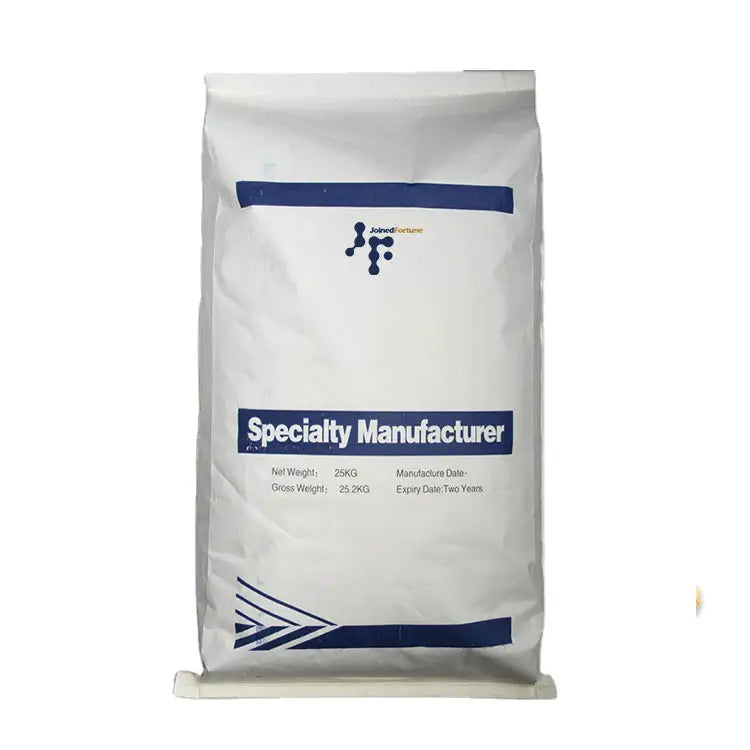E1412 Distarch phosphate
E1412 Distarch phosphate
Product Description:
E1412 is the European food additive code for distarch phosphate (also known as modified starch E1412). It is a modified starch derived from various starch sources, such as corn, tapioca, or wheat. Distarch phosphate undergoes a modification process involving phosphorylation, which enhances its functional properties and expands its applications in the food industry.
Distarch phosphate appears as a white to off-white powder with a neutral taste and odor. It has good solubility in water and forms a clear, viscous solution when dissolved. The modification process alters the structure of the starch molecules, improving its stability, resistance to shear, and tolerance to high temperatures and acid conditions.
Product Applications:
Food Industry: Distarch phosphate serves as a versatile ingredient with multiple functions in food applications. Some common applications include:
Sauces and Dressings: It is used as a thickening and stabilizing agent in sauces, gravies, salad dressings, and condiments. It provides viscosity, texture enhancement, and stability.
Bakery Products: Distarch phosphate is used in bakery products such as bread, cakes, pastries, and fillings. It improves moisture retention, texture, and shelf stability.
Processed Meats: It finds application in processed meat products like sausages, hams, and canned meats. It acts as a binder, improving texture, water retention, and sliceability.
Dairy Products: Distarch phosphate can be used in dairy-based products like custards, puddings, and dairy desserts. It helps improve consistency, texture, and stability during processing and storage.
Confectionery: It is used in confectionery products like candies, jellies, and fillings. It provides texture enhancement, stability, and resistance to heat and acid conditions.
Beverages: Distarch phosphate can be used in beverages as a stabilizer or thickener to improve mouthfeel and prevent sedimentation.
Non-Food Applications: Distarch phosphate may also have non-food applications, including:
Pharmaceutical Industry: It can be used as a binder, disintegrant, or controlled-release agent in pharmaceutical tablets and capsules.
Personal Care Products: The modified starch may find application in personal care products like cosmetics, lotions, and creams, where it acts as a thickener, stabilizer, and emulsion stabilizer.
Paper Industry: Distarch phosphate can be used as a sizing agent in the paper industry to improve paper strength, surface smoothness, and ink holdout.
Ver todos los detalles
E1412 is the European food additive code for distarch phosphate (also known as modified starch E1412). It is a modified starch derived from various starch sources, such as corn, tapioca, or wheat. Distarch phosphate undergoes a modification process involving phosphorylation, which enhances its functional properties and expands its applications in the food industry.
Distarch phosphate appears as a white to off-white powder with a neutral taste and odor. It has good solubility in water and forms a clear, viscous solution when dissolved. The modification process alters the structure of the starch molecules, improving its stability, resistance to shear, and tolerance to high temperatures and acid conditions.
Product Applications:
Food Industry: Distarch phosphate serves as a versatile ingredient with multiple functions in food applications. Some common applications include:
Sauces and Dressings: It is used as a thickening and stabilizing agent in sauces, gravies, salad dressings, and condiments. It provides viscosity, texture enhancement, and stability.
Bakery Products: Distarch phosphate is used in bakery products such as bread, cakes, pastries, and fillings. It improves moisture retention, texture, and shelf stability.
Processed Meats: It finds application in processed meat products like sausages, hams, and canned meats. It acts as a binder, improving texture, water retention, and sliceability.
Dairy Products: Distarch phosphate can be used in dairy-based products like custards, puddings, and dairy desserts. It helps improve consistency, texture, and stability during processing and storage.
Confectionery: It is used in confectionery products like candies, jellies, and fillings. It provides texture enhancement, stability, and resistance to heat and acid conditions.
Beverages: Distarch phosphate can be used in beverages as a stabilizer or thickener to improve mouthfeel and prevent sedimentation.
Non-Food Applications: Distarch phosphate may also have non-food applications, including:
Pharmaceutical Industry: It can be used as a binder, disintegrant, or controlled-release agent in pharmaceutical tablets and capsules.
Personal Care Products: The modified starch may find application in personal care products like cosmetics, lotions, and creams, where it acts as a thickener, stabilizer, and emulsion stabilizer.
Paper Industry: Distarch phosphate can be used as a sizing agent in the paper industry to improve paper strength, surface smoothness, and ink holdout.








